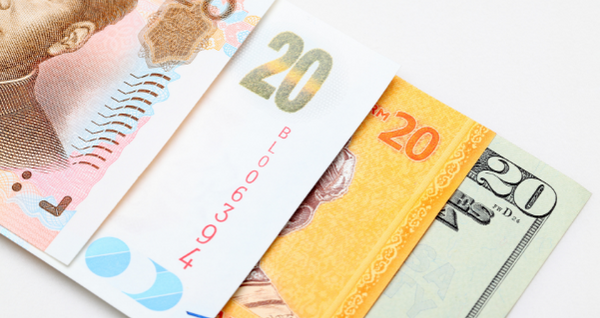Emerging market currencies shrug off stock market woes
Last week saw the continuation of an interesting theme, in which emerging market currencies continue to hold their own even as stock markets in developed countries are shaken by bouts of risk aversion.
FX Market Updates
Last week saw the continuation of an interesting theme, in which emerging market currencies continue to hold their own even as stock markets in developed countries are shaken by bouts of risk aversion.US rates took a breather in their march higher, with the 10 year yield down 2 basis points. The ostensible catalyst for the sell off in risk assets was geopolitical concerns around the Ukraine crisis, which leaves most major emerging economies relatively unaffected (Russia excepted of course), US yields flat to lower and commodity prices higher. All in all a positive combination for emerging markets. The net result was a very unusual currency scoreboard, with Latin American currencies on top together with the G10 safe-havens, the Swiss franc and the Japanese yen.The Federal Reserve meeting on Wednesday will be the key event of the week, with the market near universally expecting the FOMC to signal a hike in March, and the possibility of an early end to asset purchases. The PMI leading indicators of business activity in the Eurozone and the UK, out Monday, will provide a read on the impact of the omicron variant on the bloc's economy. Finally, traders will also be watching the latest headlines out of Ukraine.Figure 1: G10 FX Performance Tracker (1 week)
 We look to the January PMIs on Monday to confirm that the impact of omicron in the UK economy is noticeable but manageable, as all three subindinces stay in expansionary territory. We think that the relief in lockdown measures announced earlier-than-expected last week may provide enough impetus for a positive surprise here and start the pound on a solid footing for the week.
We look to the January PMIs on Monday to confirm that the impact of omicron in the UK economy is noticeable but manageable, as all three subindinces stay in expansionary territory. We think that the relief in lockdown measures announced earlier-than-expected last week may provide enough impetus for a positive surprise here and start the pound on a solid footing for the week.

GBP
The sterling rally paused last week on soft economic news out of the UK, namely the sharp decline in December retail sales, and a generally risk averse trading environment. However, the big upwards surprise in December inflation all but guarantees a Bank of England hike at its February meeting. UK headline inflation rose to 5.4% last month (above the 5.1% consensus), and its highest level since March 1992.Figure 2: UK Inflation Rate (2012 - 2022) We look to the January PMIs on Monday to confirm that the impact of omicron in the UK economy is noticeable but manageable, as all three subindinces stay in expansionary territory. We think that the relief in lockdown measures announced earlier-than-expected last week may provide enough impetus for a positive surprise here and start the pound on a solid footing for the week.
We look to the January PMIs on Monday to confirm that the impact of omicron in the UK economy is noticeable but manageable, as all three subindinces stay in expansionary territory. We think that the relief in lockdown measures announced earlier-than-expected last week may provide enough impetus for a positive surprise here and start the pound on a solid footing for the week.EUR
We are witnessing the development of a significant split in the outlook of the ECB governing council. By all accounts, it is growing less comfortable with its optimistic assumptions regarding a prompt return to 2% inflation, and there are disagreements over the wind up of the QE programme, as evident in the latest set of accounts from the bank’s December meeting.On the other hand, President Lagarde seems to still cling to a dovish view of inflation and its prospects. We think that the European Central Bank’s inflation forecasts are implausibly optimistic at this stage. We expect the split in the Council to grow wider and eventually lead to an ECB interest rate hike before year end, which we think should provide a tailwind for the euro.





